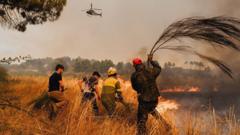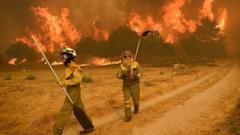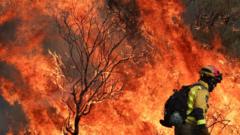In a groundbreaking study published in the Proceedings of the National Academy of Sciences, researchers reveal that the years 2023 and 2024 ranked as the hottest on record, leading to catastrophic wildfires that devastated over 78 million acres of forests globally. These fires released several billion tons of carbon dioxide into the atmosphere, creating hazardous air quality conditions for millions.
John Abatzoglou, a climate scientist at the University of California Merced, pointed out the alarming trend: “Climate change is loading the dice for extreme fire seasons like we’ve seen. There are going to be more fires like this.” The research highlights that the area of forest canopy lost in these two years was at least double that of the nearly two decades prior.
Utilizing LANDSAT satellite imagery, the study analyzed tree cover shifts from 2002 to 2024 and compared these changes with satellite detections of fire activity. The findings underscored a troubling increase in forest fire activity, particularly in boreal and tropical regions. Boreal forests experienced over twice the canopy loss compared to earlier periods, while tropical forests faced a threefold increase in devastation. North American forests, particularly in Canada, recorded nearly four times the canopy loss due to severe wildfires.
While the overall area of land burned by wildfires has decreased as humans convert flammable savannas and grasslands into safer landscapes, the prevalence of forest fires has sharply risen, indicating that climate change significantly influences these patterns.



















